CALES faculty recognized as Women of Impact
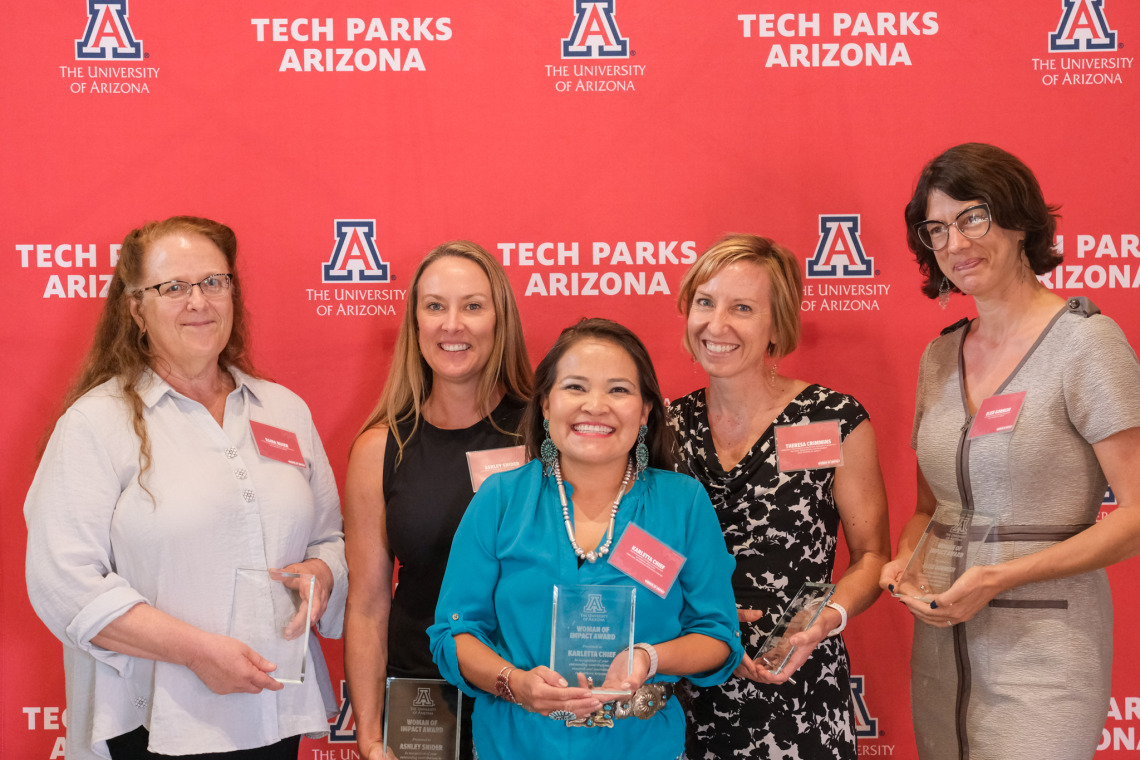
Inclusive excellence fuels our mission to develop adaptive problem-solvers in a time of incredible transformation. This fall, five CALES faculty were recognized as Women of Impact for their work toward innovation and discovery.
During Women’s History Month, the University of Arizona Office of Research, Innovation & Impact announced the Women of Impact Awards as an inaugural effort to embrace and empower women, who through their work at our university, are laying the groundwork for a better future.
Faculty and staff nominated more than 400 outstanding women who have contributed to our identity as a world-class research enterprise. Among other criteria, the members of this class were selected by the committee based on their commitment to our mission and values, an application of skills toward discovery and innovation, the enrichment of our community, and the empowerment of others to ensure lasting change.
Five College of Agriculture, Life and Environmental Sciences faculty were included in the inaugural class, including Elise Gornish, Theresa Crimmins, Ashley Snider, Karletta Chief, and Raina Maier.
Read more about what brought them to science and how they are driving innovation on campus and beyond:
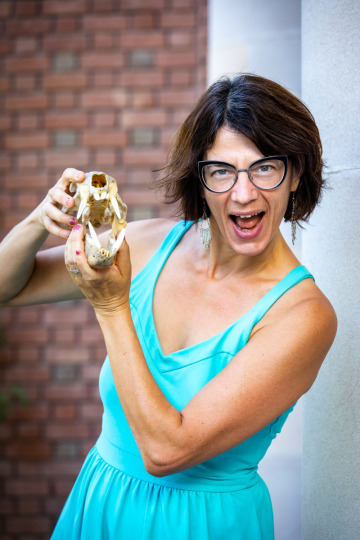
Elise Gornish
Elise Gornish
Elise Gornish never thought she had what it takes to become a scientist. Now she's a Cooperative Extension Specialist and early career leader in ecological restoration with more than 65 journal articles and 250 science presentations under her belt.
“I wasn't like a cradle scientist. I had a brother who was encouraged to do science and engineering and I was always told English and business, so that's what I did,” Gornish said. “I was in the business world for a couple of years, making good money, but I realized I wasn't happy. I thought, well what am I going to do?”
After making a list of things she liked – being alone, eating ice cream, being with plants – she realized she might like a career as a forest ranger.
“I didn't know anything about forestry or being a forest ranger. So, I literally googled: how do you become a forest ranger? And there was all this stuff about ecology,” Gornish recalled. “And I had never seen that word before in my life, I didn't know what it meant. I had never taken a science course in my life, I wasn’t a good student.”
Nevertheless, she enrolled in night courses at Hunter College in New York City. The school didn’t have an ecology program but did offer cellular and molecular biology.
“It was the first time ever in my life that I was like whoa, I like this stuff. I started learning how the world worked, learning something tangible about the world around me, and I realized that I was doing really well,” Gornish said. “I was like oh, I’m not stupid. I'm not a bad student. Science is for me, even though I was told the complete opposite my whole life.”
Gornish was hooked. After completing graduate studies in Florida, she came to the University of Arizona School of Natural Resources and the Environment in 2017 and still has a personal connection and excitement for the work she does on the ground in partnership with diverse community groups – including youth, the U.S. Forest Service, environmental non-profits, and ranchers. With her partners, Gornish works to restore drought-affected lands with native plants, supporting everything from butterflies and bees to wildlife and cattle grazing.
In 2019, Gornish established the UArizona Girls on outdoor Adventure for Science and Leadership program, or GALS for short, to address the gender and racial gaps in STEM and empower girls to identify with science. The program hosts an annual fall camping trip to bring young women into the back country and expose them to local ecology and natural resource issues.
“To the kid wherever, who thinks science isn't for them, I am living proof. I literally almost failed out of college. I have major ADD, it's really hard for me to study. I have all these things that make it really hard to do well and to be what we stereotypically associate with kids that are going to be good at science,” Gornish said. “And look at me, you can be where I am. You can literally do whatever you want, if you're interested in it. If you're not, that's cool, too.”

Ashley Snider
Ashley Snider
Ashley Snider studies lipids and the role they play in intestinal biology and diseases like inflammatory bowel disease (IBD) and colon cancer, but she believes her greatest impact is in her role as a mentor to the next generation of scientists.
Snider joined the University of Arizona faculty in 2019, as a joint-appointee in School of Nutritional Sciences and Wellness and the BIO5 Institute. In the past three years, her lab has been awarded $3.29 million in grants from the National Institute of Health. Her research focuses on sphingolipids – a class of lipids essential to cell biology.
“We’re working on the basic mechanisms that are involved in metabolizing specific dietary fatty acids,” she explained. “The science is very exciting, and I think we’re going to learn some great things. But interacting with the students, seeing them grow, helping them get where they want to be – that is my favorite part of my job.”
One of the reasons she takes mentoring so seriously is her own experience being trained by generous and inspiring mentors. “I did my Ph.D. in a lab with an amazing woman and scientist who was a phenomenal mentor,” she recalls. “She let me fail. She didn’t stand over me and watch over my shoulder. When I struggled, she encouraged me to do what I found exciting, follow the path I wanted to follow, and I’d figure it out. And I did.”
Now in her own research lab, Snider is committed to offering her students that same sort of encouragement and support to follow their own curiosity.
“Support to independence is really what I try to provide,” she explained. “Ideally, the student becomes the master of their domain. So, they become the expert, sometimes even surpassing the mentor. And it’s a really nice thing when that happens.”
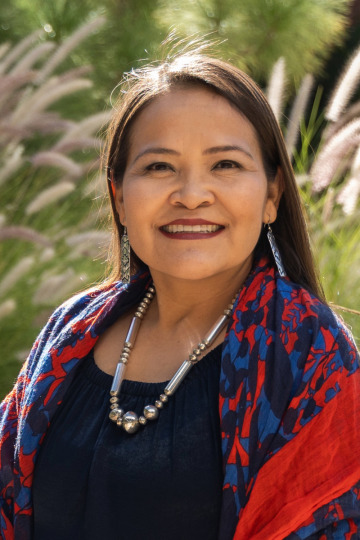
Karletta Chief
Karletta Chief
When it comes to using science to serve Indigenous communities, Karletta Chief stands in a league of her own. Chief is a hydrologist, best known for her work to address environmental pollution on the Navajo Nation and increase the participation of Native Americans in STEM.
Chief is Diné and is from the Bitter Water Clan, one of the Navajo Nation clans. At the University of Arizona, she is an associate professor and extension specialist in the Environmental Science department. By connecting her cultural heritage with her profession, Chief successfully works with Native American nations to address environmental challenges in ways that respect Native and Indigenous sovereignty and knowledge.
In 2021, Chief became the first director of the Indigenous Resilience Center, a new university research facility focusing on interdisciplinary projects with Native nations. Through this center and in her own environmental science research, Chief said keeping Native nations’ perspective and knowledge involved is essential.
“It is critical that Native nations drive the research questions based on their priorities and long-standing local knowledge, and that the approaches involve decolonized and indigenized approaches with Indigenous scientists actively leading these efforts,” Chief said. “Furthermore, the resilience partnerships will aim to involve students who want to give back to their communities through community-based projects that are action-oriented and solution-driven."
According to Chief, her work and her personal life are tied to the women who came before her and those who will follow in her footsteps after. “I stand on the shoulders of all the women before me including Adzáá Tó’díchíínii, my great-great grandmother, who through her weaving survived the internment camp at Bosque Redondo during the Long Walk by weaving beautiful Navajo rugs and exchanging them for food,” Chief said. “Now as a professor, wife and mother, I strive to give back to future generations of women leaders!”
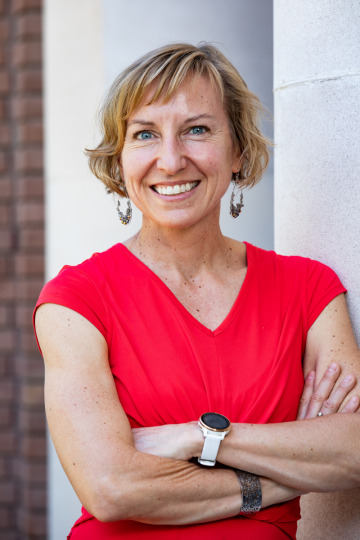
Theresa Crimmins
Theresa Crimmins
Theresa Crimmins’ love for the natural world was born out of family trips to the national parks, today she directs a network of citizen scientists whose shared observations help us better understand our changing world.
“We would take pretty extensive vacations in our pop-up camper to national parks around the country. Seeing the natural phenomena was, I think, what really sparked in me an appreciation for being outside,” Crimmins said. “The plants, the geology, how water can cut and shape canyons, it really grabbed me and wouldn’t let go.”
Today she is a research professor in the School of Natural Resources and the Environment and the director of the USA National Phenology Network, based at the university in Tucson.
“The primary aim of our program is to engage professional scientists, natural resource managers and volunteers across the country in tracking when plants and animals undergo seasonal life cycle events throughout the growing season,” Crimmins said.
The USA-NPN team and other scientists around the world use these observations to better understand how the timing of seasonal events like spring wildflower blooms and bat or butterfly migrations are changing.
“It may not seem like a big deal for cherry trees to bloom a few weeks earlier than they did a few decades ago but shifts in the timing of events like this – termed phenology – has major consequences for species that depend on those flowers as a food source to be available at a particular time,” Crimmins said. “Changes in phenology actually have major implications for nearly every aspect of our lives, including human health, agriculture, tourism, wildfire and more.”
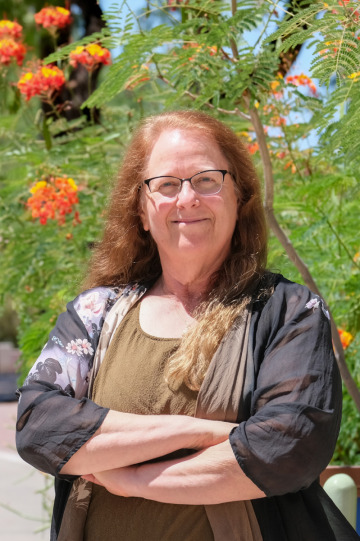
Raina Maier
Raina Maier
When Raina Maier was only four years old, she knew she had a passion for the environment. Today she is a prominent figure in environmental research both at the University of Arizona and beyond.
Her research mainly falls into two fields: microbial surfactants and soil microbiomes. Surfactants are molecular compounds that are typically used to break surface tension between water and air, which are used in many ways, such as cleaning detergents.
Maier’s research led her and a colleague to discover how to make microbial surfactants synthetically and use them in environmental remediation and to remove valuable and contaminate metals from water sources.
Maier’s other research focus is on soil microbiomes in arid environments, with a particular focus on mine tailings, which are the leftover waste materials from mined areas.
To increase the amount of research related to mine tailings and soil health, Maier co-founded the Center for Environmentally Sustainable Mining at the University of Arizona. Maier is also the director of the University of Arizona Superfund Research Center, a multimillion-dollar research program that is funded by the National Institutes of Health.
As part of the inaugural class of the Women of Impact, Maier said that the road to success for future awardees may not be easy. “Don’t expect it to go smoothly, but keep at it and it will pay off.”

